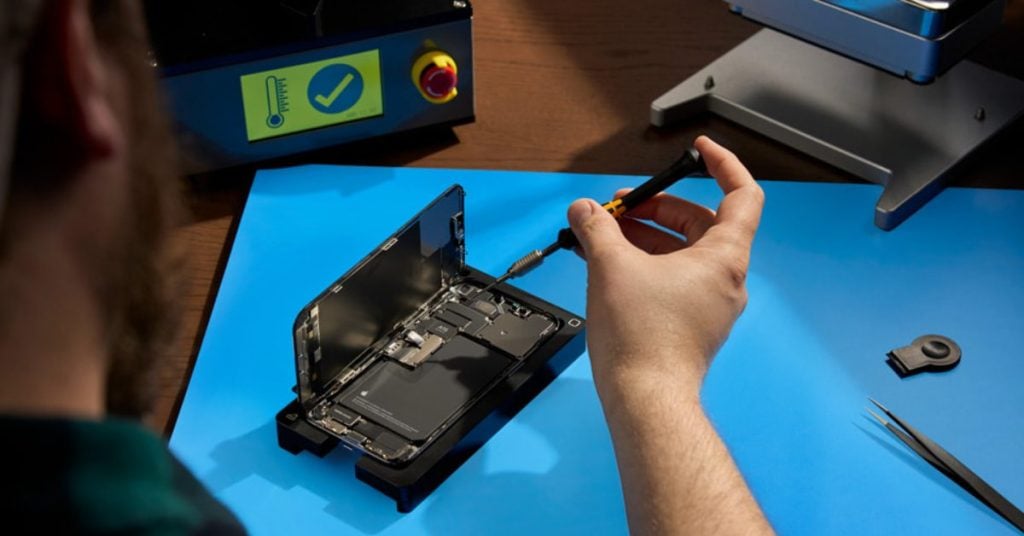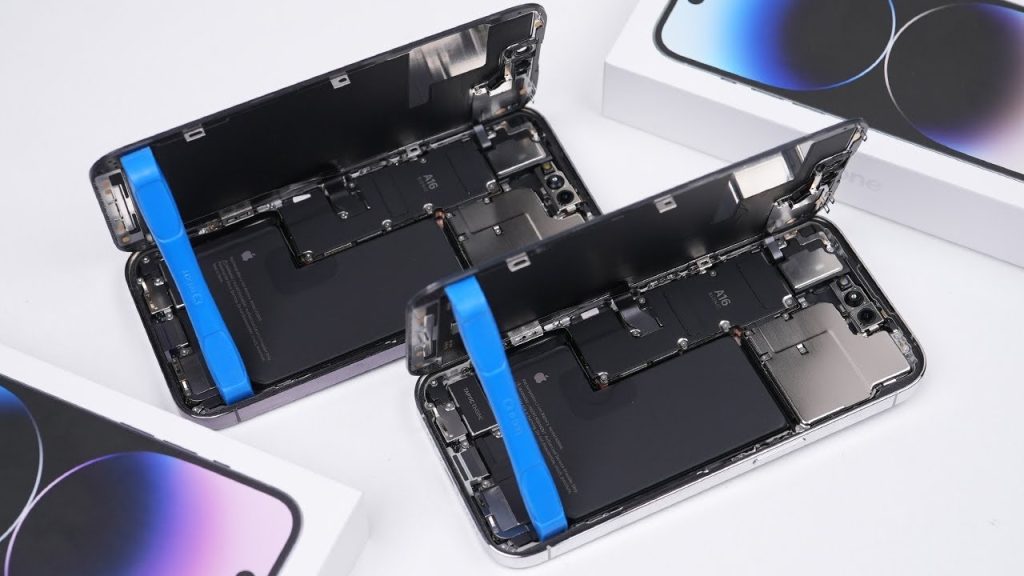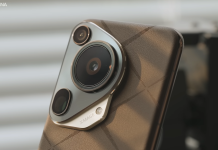Apple has now expanded its self-repair and independent repair programs for iPhones. The change means you can now repair your smartphone on your own and most notably with used genuine parts. It’s a first for the company and a move towards a more sustainable future for iPhones.
If you’re unaware, repairs previously solely relied on new parts However, this all changes with Apple’s new “parts calibration” process. According to Apple, used parts will undergo this process upon installation in another iPhone. And as long as the part is genuine, it will function seamlessly without any restrictions.

This opens the door for users and independent repair shops to swap out faulty components with used parts from other iPhones. This program will begin this fall, starting with “select iPhone models.”
Apple emphasizes that these used genuine parts will offer the “full functionality and security afforded by the original factory calibration, just like new genuine Apple parts.”
The company also remains committed to “part pairing,” a process that verifies the authenticity of repair parts and gathers vital information about them. This ensures user privacy, security, and device safety. Previously, replacing an iPhone part with one from another phone caused issues because the part remained “paired” with its original device.
Over the past two years, Apple’s development teams have focused on enabling the reuse of even biometric components like Face ID and Touch ID sensors. This fall’s update will see the calibration process happening directly on the device itself, once the used part is installed.

Additionally, future iPhones will come pre-equipped to support used biometric sensors. This eliminates the need for customers and repair providers to provide a device’s serial number when ordering parts that don’t involve replacing the logic board.
To combat the use of stolen iPhones for parts, Apple is extending Activation Lock to encompass individual components. If a device under repair detects a supported part originating from another iPhone with Activation Lock or Lost Mode enabled, the calibration process for that part will be restricted upon installation.
Finally, Apple highlights the unique “Parts and Service history” feature within the iPhone’s Settings app. This feature allows second or third-hand iPhone owners to access a comprehensive history of repairs and replaced parts.
This fall, the “Parts and Service history” will be expanded to indicate whether a specific part is a new or used genuine Apple part, providing even greater transparency for consumers.
Related:
- iPhone 16 Plus could come in 7 colors options: Here are the two new additions
- Apple to Unleash M4 Chips by Year-End, Focusing on AI Performance
- Apple Warns iPhone Users in 92 Countries of Potential Spyware Attacks
- Get latest Oneplus 12 Phone for $699 on Geekwills
- Get $100 Off on Vivo X100 Pro at Giztop
- How to add custom GIFs and stickers to WhatsApp







